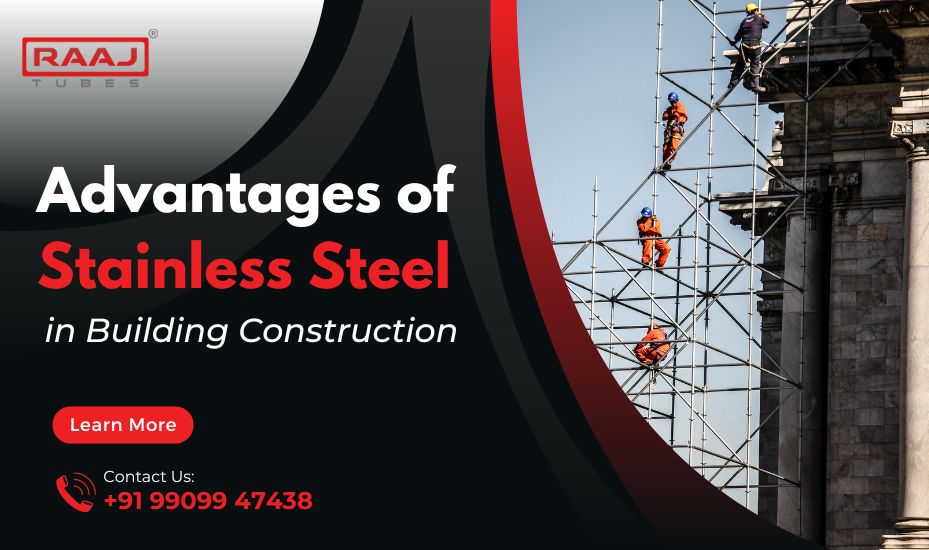In this blog, we will explore why stainless steel is revolutionizing building practices:
Envision a skyscraper soaring into the heavens, its surface reflecting the sun’s rays. Visualize a bridge elegantly spanning a waterway, a testament to modern engineering. Both construction marvels share a secret ally: stainless steel.
This versatile alloy has transcended its culinary confines to become a linchpin in construction. Architects and builders prize stainless steel for its exceptional combination of durability, aesthetic appeal, and resilience, elevating it to a cornerstone status in the industry.
Stainless Steel in Building: Strength and Resilience
Stainless steel is a titan among materials. Its significant chromium content endows it with formidable strength and a stalwart defense against corrosion. This resilience empowers structures to endure extreme climates, from the blistering heat of deserts to the icy grips of polar regions. Iconic skyscrapers owe their existence to such enduring materials.
Consider this: the assurance that your residence, or the bridge you traverse daily, is constructed from a material designed to withstand nature’s fury. Stainless steel provides that assurance.
Aesthetic Appeal: The Essence of Modern Elegance
Beyond its brawn, stainless steel boasts a refined beauty. Its pristine, polished look imparts a contemporary sophistication to any edifice. Employed in exterior cladding, stairway railings, or ornamental features, stainless steel enhances a structure’s visual allure.
Picture a building clad in lackluster, weather-beaten materials—hardly inspiring. Stainless steel infuses an air of modernity, crafting an image that is both chic and enduring. Its ability to maintain its luster over time means less need for replacement or refurbishment, translating to reduced lifecycle costs for proprietors.
Sustainable Choice: Embracing Eco-Friendly Construction with Stainless Steel
In today’s eco-conscious construction landscape, stainless steel stands out as a sustainable option. Here’s why:
- Durability: As highlighted, stainless steel’s longevity means fewer replacements and repairs, diminishing the environmental toll of material production and processing.
- Recyclability: This alloy’s high recyclability makes it a conscientious selection for builders with an environmental bent. Post-use, we can repurpose stainless steel into new creations, curtailing waste.
- Low Maintenance: Unlike materials that demand constant upkeep, maintenance needs of stainless steel in a building are minimal, leading to reduced resource and energy use over time. For instance, while wood requires periodic staining or painting, stainless steel’s appearance is preserved with simple cleaning.
For those aiming to construct with the planet in mind, stainless steel is an exemplary choice.
Diverse Applications: A Material for Every Vision
Stainless steel’s allure lies in its adaptability. Below are examples of its myriad uses in construction, illustrating the extensive scope of this material’s applications:
- Building Facades: Stainless steel panels bestow a reflective, modern sheen, adding a striking element of surprise. Picture a museum or conference center adorned with a gleaming stainless steel facade—it commands attention and exudes elegance.
- Roofing Systems: With its robust resistance to corrosion and weathering, stainless steel is a dependable option for durable roofing. This is particularly crucial in coastal locales or areas prone to heavy precipitation, where conventional roofing materials may quickly succumb.
- Interior Design: Stainless steel brings a refined flair to interiors. It graces railings, staircases, countertops, and decorative accents, reflecting light and amplifying a sense of space and modernity that harmonizes with diverse design themes.
- Structural Applications: Owing to its robustness, stainless steel is suitable for structural elements like beams and pillars. This enables bold, expansive designs that stretch the limits of contemporary architecture.
- Hospitals and Medical Facilities: The alloy’s resistance to corrosion and ease of sanitation make it an optimal choice for medical settings where cleanliness is crucial. Stainless steel surfaces can be sanitized routinely to hinder germ proliferation, fostering a more hygienic environment for patients and healthcare workers.
- Food Processing Plants: Echoing medical facilities, food processing plants necessitate sterile conditions. Stainless steel’s smooth surface hinders bacterial growth and is readily sanitized, playing a pivotal role in upholding food safety protocols.
These instances are merely the tip of the iceberg. Stainless steel’s versatility renders it an invaluable resource in construction, capable of fulfilling a vast array of roles.
